Spectroscopy is a discipline of the physical sciences that concerns and utilizes the interactions between matter and electromagnetic radiation. The main types of spectroscopy can be categorized according to the type of light they measure, be it absorbed, reflected, transmitted, emitted, and scattered light of the sample, or if we are examining fluorescence.
Spectroscopy is a broad field in itself, further categorized according to wavelength range. This process includes various forms of spectroscopy, including microwave, infrared, visible, and X-Ray.
Hamamatsu offers high-performance components and modules for both the near-infrared (700-2500 nm) and visible (300-700 nm) range, which has become increasingly popular in environmental, chemical, material, and other types of analyses.
The process of visible spectroscopy absorption involves atoms and molecules absorbing visible light through electronic transitions.
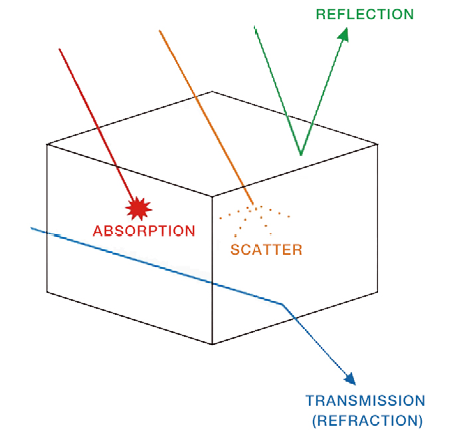
Figure 1. Types of spectroscopy. Image Credit: Hamamatsu Photonics Europe
When an atom or molecule absorbs light of a specific energy or wavelength, it will result in a decrease in the amount of transmitted light.
In liquids and solids, visible light absorption primarily occurs from complex conjugated double bonds and aromatic rings present in organic molecules.
Many aqueous transition metal ions are also able to form strongly light-absorbing species through complexions with associated water molecules in visible spectroscopy absorption.
The diverse spectrum of colors that can be observed in the condensed phase is a result of the absorption of light through electronic transitions. This process is what produces a broad array of captivating colors.
The energy present in the light within the near-infrared (NIR) spectrum is insufficient to activate the electronic transitions observed in the visible range.
As a result, the vividly colored compounds that appear in the visible range exert less impact on the NIR. In the NIR range, absorption of light occurs through vibrational transitions. If the light has the appropriate energy or wavelength, this type of absorption will result in an increased vibrational mode between two atoms bonded together in a molecule.
Unlike the visible range, NIR absorption does not necessitate conjugated bonds or solvent complexes. Thus, it responds more to the specific structure of the molecule and its interactions with other molecules in the vicinity.
The efficacy of NIR spectroscopy is due to this sensitivity to the molecular structure and environment. One of the most essential NIR Spectroscopy techniques is Raman scattering.

Figure 2. The principle of Raman spectroscopy. Image Credit: Hamamatsu Photonics Europe
Raman spectroscopy requires the analysis of the vibrational modes of the crystals or molecules in question.
When light is directed at a material, some of it is scattered. The scattered light can either have the same wavelength as the incident light (known as Rayleigh scattered light) or different wavelengths (known as Raman scattered light).
Raman spectroscopy identifies the molecular or crystal structure of substances by examining the properties of the Raman scattered light. This technique is suited to the analysis of most substances, including organic matter, inorganic compounds, gases, liquids, solids, and more, without the need for special pretreatment.
Raman spectroscopy aims to measure the Raman shift, which is the energy shift that occurs during Stokes scattering. However, Stokes scattering is significantly less likely to occur than Rayleigh scattering.
Raman spectroscopy is a ‘fingerprint technique’, with unique spectral signatures produced by each specific substance. The information obtained through Raman spectroscopy is rich and diverse.
One particular application of Raman spectroscopy is in the field of historical art authentication, where it can be used to analyze the crystalline or molecular structure of paint to verify authenticity. Raman spectroscopy can similarly be used as a way of analyzing crystalline samples in the semiconductor industry, and also in the chemical and pharmaceutical industries because it is a point-and-shoot technique that does not require sample pre-treatment. The information that can be gained from performing Raman spectroscopy falls into four main categories.

Figure 3. Four Raman spectroscopy categories. Image Credit: Hamamatsu Photonics Europe
The first category is the Raman shift, which provides general information about the sample crystal or molecule. The second is the intensity, indicating the concentration of each substance.
Thirdly, it measures the full width of the peak at half maximum and otherwise analyzes the shape of the peak to gather information about the crystalline structure.
Lastly, potential peak deviations can indicate interactions with surrounding molecules, or they may be due to distortion and strain of the molecular structure.
This is clearly shown in the spectrum of the different states of water, shown below.
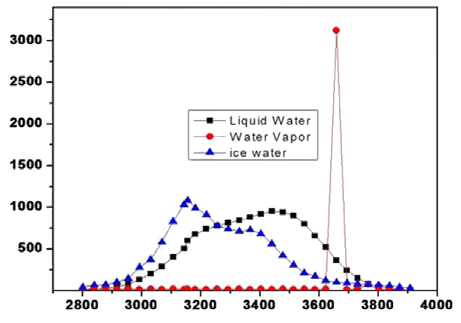
Figure 4. Spectrum of different states of water. Image Credit: Hamamatsu Photonics Europe
Figure 4 demonstrates that the Raman signal of water vapor gives a sharp peak, whereas liquid and frozen water generate much broader peaks. This is a result of their molecular interaction with the surrounding molecules.
One of the key features of the Raman spectroscopy method is that this energy shift is independent of the incident wavelength used. Raman spectroscopy can thus be performed across a broad energy range. Popular wavelengths are common semiconductor diode wavelengths - 532 nm, 785 nm, or 1,064 nm.
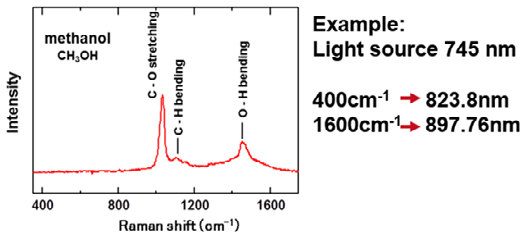
Figure 5. Intensity measurement of methanol. Image Credit: Hamamatsu Photonics Europe
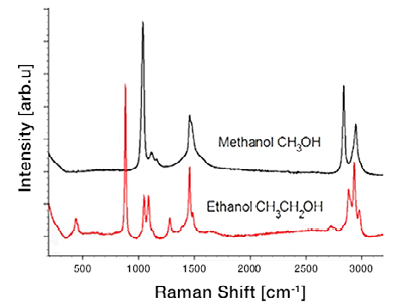
Figure 6. Comparison of the Raman spectrum of pure Methanol and Ethanol. Image Credit: Hamamatsu Photonics Europe
The two spectra (shown above) have similar peaks corresponding to the same wavelength, but ethanol has additional distinct peaks. This difference is because ethanol is a larger molecule and therefore has more possible vibration modes that can be excited by Raman spectroscopy.
The examples shown previously show high-quality Raman spectra with excellent signal-to-noise ratio and spectral resolution. This is no small feat; the low probability of Stokes scattering compared to Rayleigh scattering, which is larger by factors of millions to billions, makes it difficult to obtain such high-quality spectra.
There are three critical components to a standard Raman spectroscopy setup: a coherent light source (typically a laser), optical components such as mirrors, filters and gratings, and a sensitive sensor for signal acquisition. It is the visible and near-infrared part of the spectrum that is typically of concern in Raman spectroscopy, and a detector with high sensitivity is needed to detect the extremely faint Raman scattered light. Linear image sensors are frequently used to detect multiple dispersed wavelengths simultaneously.
Hamamatsu Photonics is a leading supplier of high-quality, high-performance, and affordable CMOS technology for analytical, industrial, and spectroscopy markets. Hamamatsu use their extensive experience in the field of photonics technology, including optics, mechanics, electronics, and software, to produce a wide product portfolio, including CCD (with TDI-CCD), CMOS, and NMOS.
Building upon the advantages of the previous model, the new CMOS linear image sensor, S16596-4096-11, has a longer pixel size (7x200 μm), 4096 pixels, a maximum data rate of 10 MHz, low readout noise (typ. 0.4 mV rms), and high dynamic range (5000 times).
It includes key functions, such as simultaneous charge integration for all pixels, variable integration time, a built-in timing generator, and an electronic shutter. The S16596-4096-11 sensor also provides higher sensitivity, perfectly suited to Raman spectroscopy applications.
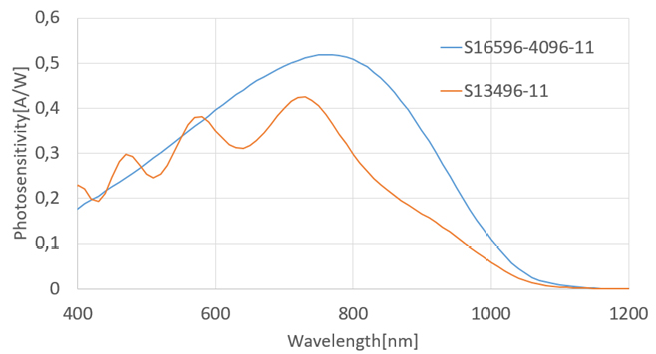
Figure 7. Comparison with the previous model. Image Credit: Hamamatsu Photonics Europe
As well as the sensor, Hamamatsu additionally offers a driver circuit with a 16-bit digital output and is compatible with USB 2.0 interfaces.
The power supply can be provided via the USB bus power and is DC+5V. The readout frequency of the driver circuit is 10 MHz, and the size of the Sensor Board is 20 x 41.6 mm, while the Interface Board measures 45 x 50 mm.
The external synchronization operation is also available with this driver circuit.
An evaluation board comprising sensor and readout boards and lens mount (F-mount) is available, enabling the testing of this CMOS for a particular application.

CMOS linear image sensor, S16596-4096-11. Image Credit: Hamamatsu Photonics Europe
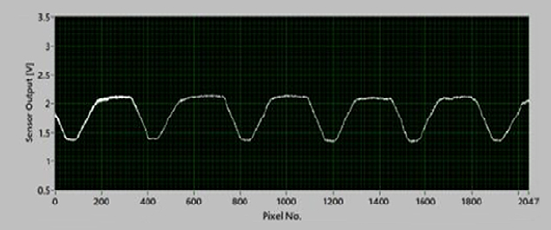
Figure 8. Typical output of the readout board The vertical axis indicates the sensor output. The horizontal axis indicates the number of pixels. Image Credit: Hamamatsu Photonics Europe

This information has been sourced, reviewed and adapted from materials provided by Hamamatsu Photonics Europe.
For more information on this source, please visit Hamamatsu Photonics Europe.